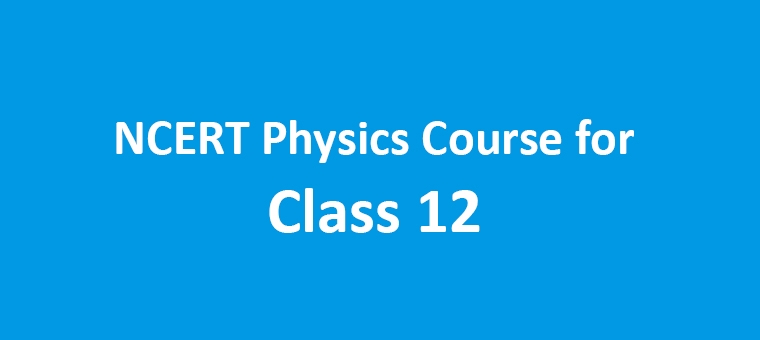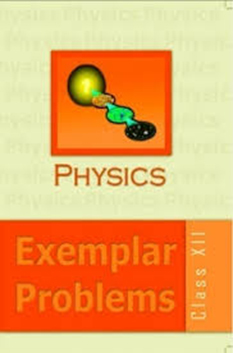NCERT 12th Physics Course and Tutorial
Posted by: Admin | 29 May 2020

Standard 12th is the turning point in the life of every student who aspires to achieve something in his life. His devotion to work and a healthy foundation is the basis which can pave his road to success. After being a matriculation pass, every student has to decide what he has to choose for his life, which will prove to be the best for his nearing future. Some may want a stream because of passion or to follow their dreams; some maybe because of family pressure for a particular direction and imitating their peers.
Whatever happens, whether it's out of interest or imposition, one has to pursue the best from it because it is the deciding factor for the future waiting for our arrival. We need to make our subjects strong so that we don't regret later that a little bit of extra effort might have proven useful.
In this article, I will be putting light on the subject, which is an integral part for any science student who wants to pursue Engineering or Medical. The course loved by many, the one with the play of real-life situations forming the gravity of love for the subject that is Physics. This is the subject which nurtures us from the very beginning of our secondary school life and continues till ages.
Physics of standard 12th is developed based on the foundation standard in class 11th. Standard 12 Physics is quite the core for the students who are planning to pursue Engineering.
To achieve success in any exam related to any science field related to Engineering or Medical, NCERT 12th Physics plays a vital role. All the concepts frequently asked in competitive exams are thoroughly covered. The topics are explained elegantly with simple steps and innovative approaches.
This book is written by content experts on the standard 12th Physics CBSE syllabus. Most of the boards recommend NCERT as a religious book for their studies. They are helpful to candidates who aspire to score good and easily crack competitive exams.
The way of presenting the content is quite beautiful as it is quite a student-friendly. The contents start from the very basics and go till the most difficult.


Now coming onto the syllabus covered in the book, which every standard 12th student should be well acquainted with.
- Unit I: Electrostatics
- Chapter-1: Electric Charges and Fields
- Electric Charges; Coulomb's law-force between two point charges.
- Electric field, electric field due to a point charge, torque on a dipole
- Electric flux, statement of Gauss's theorem and its applications
- Chapter-2: Electrostatic Potential and Capacitance
- Electric potential, equipotential surfaces, electrical potential energy
- Conductors and insulators, dielectrics and electric polarization, capacitors and capacitance,
- Chapter-1: Electric Charges and Fields
- Unit II: Current Electricity
- Chapter-3: Current Electricity
- Electric current, V-I characteristics (linear and non-linear), carbon resistors, and color-coding.
- The internal resistance of a cell, Kirchhoff's laws, Wheatstone bridge, meter bridge.
- Potentiometer
- Chapter-3: Current Electricity
- Unit III: Magnetic Effect of Current & Magnetism
- Chapter-4: Moving Charges and Magnetism
- Concept of the magnetic field, Oersted's experiment.
- Biot - Savart law and its application, Cyclotron.
- Force on a current-carrying conductor in a uniform magnetic field.
- Chapter-5: Magnetism and Matter
- Current loop as a magnetic dipole, Earth's magnetic field.
- Para-, dia- and ferromagnetic substances, with examples.
- Chapter-4: Moving Charges and Magnetism
- Unit IV: Electromagnetic Induction & Alternating Current
- Chapter-6: Electromagnetic Induction
- Electromagnetic induction; Faraday's laws, Lenz's Law
- Self and mutual induction.
- Chapter-7: Alternating Current
- Alternating currents, LC oscillations, LCR series circuit, resonance.
- AC generator and transformer.
- Chapter-6: Electromagnetic Induction
- Unit V: Electromagnetic Waves
- Chapter-8: Electromagnetic Waves
- The basic idea of displacement current.
- Electromagnetic spectrum
- Chapter-8: Electromagnetic Waves
- Unit VI: Surface Chemistry
- Chapter-9: Ray Optics and Optical Instruments
- Reflection of light, lensmaker's formula. Refraction and dispersion of light through a prism.
- Scattering of light.
- Optical instruments
- Chapter-10: Wave Optics
- Wavefront and Huygen's principle, Young's double-slit experiment, Polarisation, plane polarised light Brewster's law, uses of plane polarised light and Polaroids.
- Chapter-9: Ray Optics and Optical Instruments
- Unit VII: Dual Nature of Matter
- Chapter-11: Dual Nature of Radiation and Matter
- Dual nature of radiation. Photoelectric effect, Hertz and Lenard's observations; Einstein's photoelectric equation-particle nature of light.
- Matter waves-wave nature of particles, de Broglie relation. Davisson-Germer experiment.
- Chapter-11: Dual Nature of Radiation and Matter
- Unit VIII: Surface Chemistry
- Chapter-12: Atoms
- Alpha-particle scattering experiment; Rutherford's model of atom; Bohr model, energy levels, hydrogen spectrum.
- Chapter-13: Nuclei
- Composition and size of nucleus, atomic masses, isotopes, isobars, isotones. Radioactivityalpha, beta and gamma particles/rays, and their properties; radioactive decay law.
- Mass-energy relation, mass defect; binding energy per nucleon and its variation with mass number; nuclear fission, nuclear fusion
- Chapter-12: Atoms
- Unit IX: Electronic Devices
- Chapter-14: Semiconductor Electronics
- Energy bands in conductors, semiconductors, and insulators (qualitative ideas only)
- Semiconductor diode - I-V characteristics in forward and reverse bias, diode as a rectifier;
- Special purpose p-n junction diodes: LED, photodiode, solar cell, and Zener diode and their characteristics, Zener diode as a voltage regulator.
- Junction transistor, transistor action, characteristics of a transistor and transistor as an amplifier (common emitter configuration), the basic idea of analog and digital signals, Logic gates (OR, AND, NOT, NAND and NOR).
- Chapter-14: Semiconductor Electronics
- Unit X: Communication Systems
- Chapter-15: Communication Systems
- Elements of a communication system (block diagram only); bandwidth of signals (speech, TV, and digital data); bandwidth of transmission medium. Propagation of electromagnetic waves in the atmosphere, sky, and space wave propagation, satellite communication. Need for modulation, amplitude modulation.
- Chapter-15: Communication Systems
All the chapters are well covered, and the student can thoroughly revise all the above topics quickly. They include real-life examples and questions which help us to build our mind and shape it accordingly.
Students must deeply go though all the subtopics mentioned above as these are not only helpful for scoring in boards but also in competitive exams like JEE.
There is one supplementary book with NCERT 12th Physics that is Physics exemplar. This is an excellent book that has Multiple Choice Questions (MCQ) and subjective ones too. These two books are the one which paves your way for a glorious success.